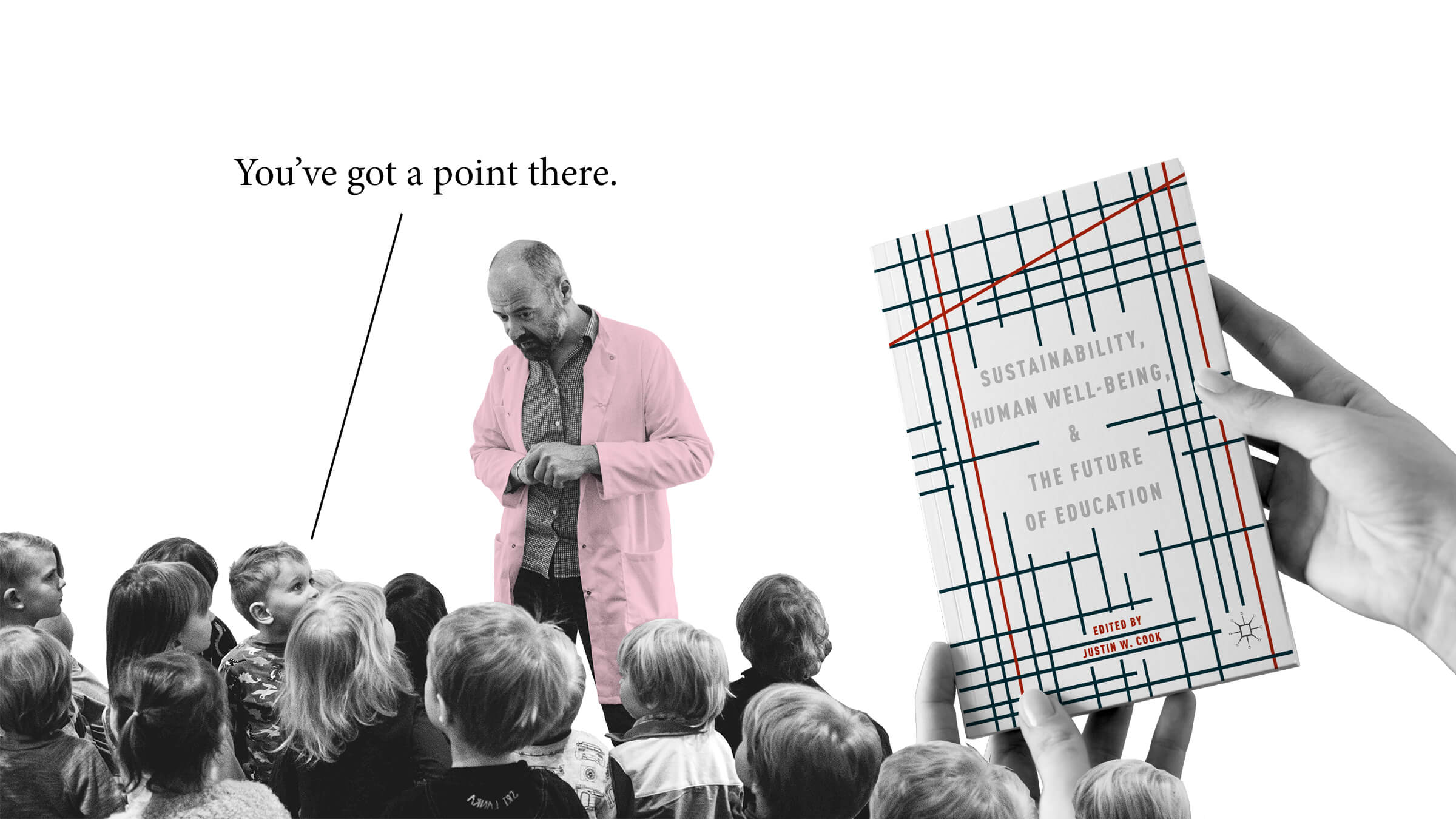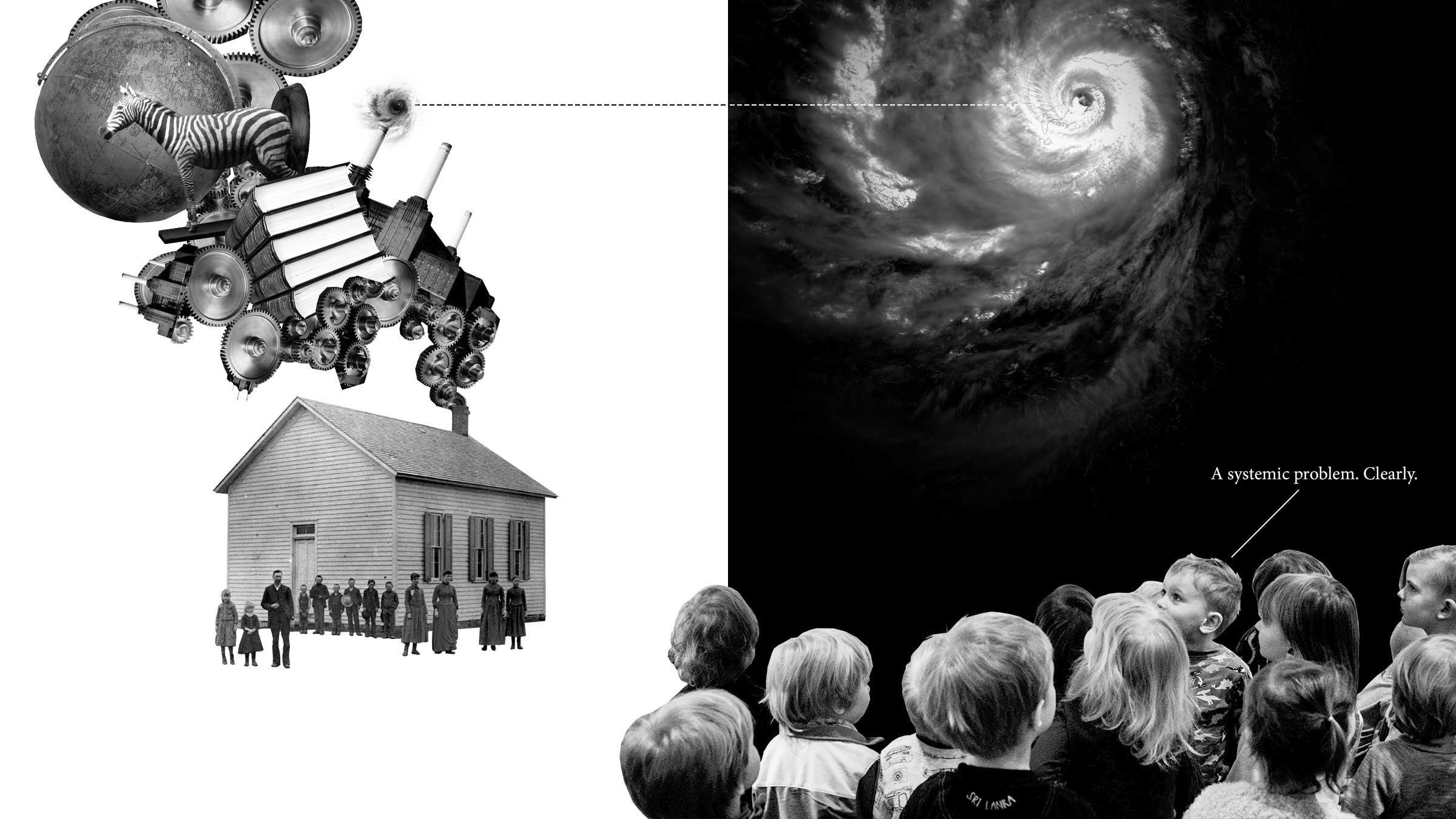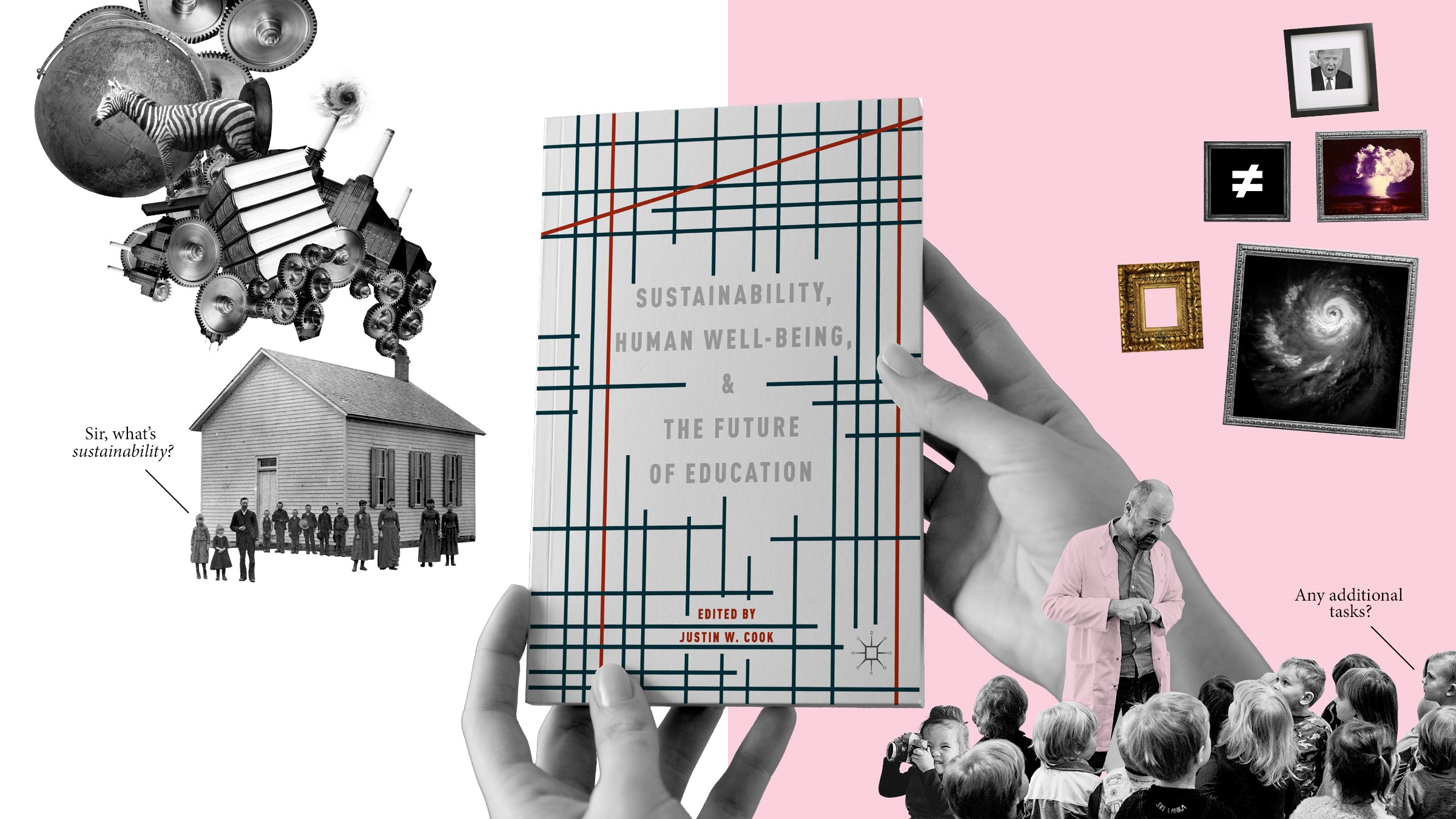Building a sustainable future is the most important task of schools and our education systems. This is how the key message of the new book Sustainability, Human well-being and the Future of Education can be summarised. In the following, we introduce six points made in the book that should be taken into account in the field of education.
1. From climate anxiety to hope and action
According to the Finnish Youth Barometer, the concern of young people over climate change has grown significantly compared to the results ten years ago. In 2008, 39.5 per cent of the respondents were very or fairly concerned about climate change, whereas in 2018 the corresponding figure was slightly under 70 per cent. More and more people also feel climate anxiety.
What then can teachers do to create hope and prevent apathy? Perspectives on this issue are presented in an article on climate change education by Anna Lehtonen, Arto Salonen and Hannele Cantell. They highlight, for example, the meaning of art and phenomena-based learning.
To grow into a change-maker who can contribute to solving our global problems, you must be aware of factors that affect your thinking, behaviour and world view. In the book, these topics are examined by Harold Glasser and Erkka Laininen.
2. You can go a long way by managing creative processes and practising critical thinking
Linda Nathan teaches at Harvard Graduate School of Education. In addition, she has established an art-oriented public high school in Boston, which is intended for young people coming from difficult circumstances. Nathan writes about how in the era of uncertain working life the skills learned in art education can carry people far. A creative process requires ability to empathise and take the recipient into account. A creative process can be examined through the tools provided by Design Thinking, where creativity is not seen as a momentary burst but a systematic process that advances step by step: define the problem, ideate, refine the proposal, test it and make a prototype.
What do the best science experts in the world do when it seems that their research is not going anywhere? They practice their thinking and take their intuition to use. In her article Asta Raami writes that in complex problem solving and in an uncertain world mere reasoning and rational thinking are not enough, but using and developing intuition has become an important skill.
3. What is the meaning of education?
The United States and the European Union together spend approximately USD 1.3 trillion (trillion = thousand billions) each year on education. What return is expected from this investment, Justin Cook asks in his introductory article. What is to be concluded from the fact that the US spends more than USD 600 billion annually on the nation’s public education system while nearly the same sum is spent reforming that very system? Is this an unavoidable symptom of a complex system; or is it indicative of a system not fit for purpose? Does the system even have a purpose? We should have a continuous and inclusive debate on the issue in our societies, Cook points out.
4. Who is “us”?
One of the most important missions of schools is to create social cohesion. In her article, Marjo Kyllönen writes that the increasing diversity requires us to write a new, appreciative story of “us”. Kyllönen works for the Education Division of the City of Helsinki and uses Helsinki as an example. The latest PISA research results revealed worrying information about the level of educational performance of immigrant students in Finland. What makes this result even more troubling is other recent research which shows that on average the Finnish language skills of the immigrant-background students was at a good level, especially among second-generation pupils. The differences stem from the socio-economic status and social capital, Kyllönen writes.
5. Systematic approach to doing things together, communal spirit and joint development is beneficial
The book introduces two schools, where the attention turns to the active role of students. In addition, the operation of these schools is based on a strong feeling of community. The Danish Kaospilot is an education programme equivalent to a bachelor’s degree in scope, where the focus is on strengthening societal change agency with the help of entrepreneurship and design thinking instead of academic approaches. The High Tech High schools in California, on the other hand, operate on a phenomenon-based way from A to Z. The learning projects linked to real-life challenges and the personal responsibility of students for their learning are an important part of the pedagogic approach at the High Tech Highs.
Jenna Lähdemäki-Pekkinen studied the preparation process of the Finnish National Curriculum that became effective in 2016 by interviewing school principals and other professionals involved in the work throughout Finland. What was their experience of the preparation process that took 2.5 years? Is it possible to create a national curriculum by developing it together?
6. And remember to put all this into practice!
The next article discusses putting the materials presented in the book into practice, tested by the Developers of sustainable education programme attendees. The Developers of sustainable education is an experimentation and training programme that brings together teachers, school principals and education professionals. The programme was organised, because we wanted to discuss the articles in the book with professionals working in the education sector and ask them what the themes of the book mean in their everyday work. The participants in the programme formed teams and made an experiment inspired by the articles in the book. They also had the opportunity to consult the authors of the articles while carrying out their experiments. Sitra organised the first Developers of sustainable education programme in spring 2017, the Education Division of the City of Helsinki organised the second one in spring 2018, and the ongoing third programme is arranged by the City of Vaasa.
You can find the book Sustainability, Human Well-being and the Future of Education as an open access e-book here. We have also compiled a summary of the book in Finnish under the name Tulevaisuuden koulutuksen käsikirja (The handbook of future education).



Recommended
Dig in deeper.